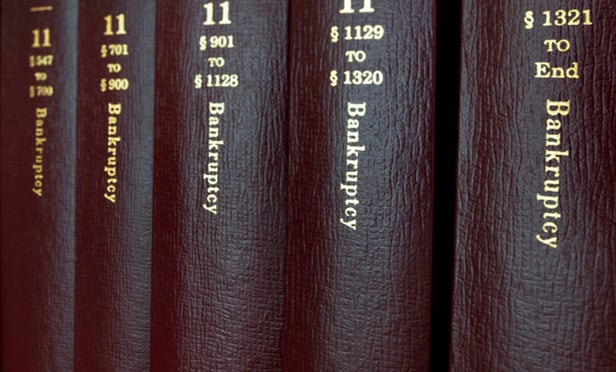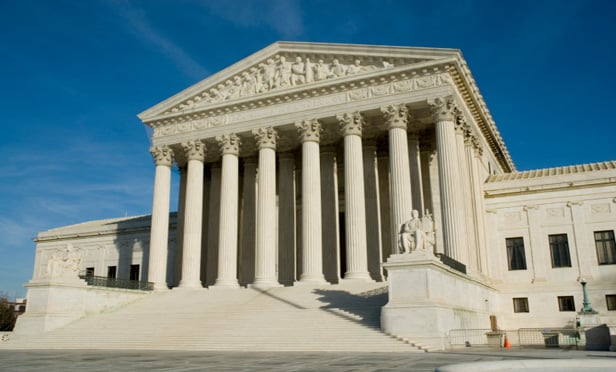Features

Secured Creditors Beware of Your Descriptions, Nomenclature and Terminations
Secured creditors can learn a great deal from a few recent bankruptcy cases involving the Uniform Commercial Code that remind us that the “devil is in the details.” These cases show that it is unrealistic to expect forgiveness by a court after a misstep involving Article 9 of the UCC.
Features

Strawberry Fields For Sale
On Oct. 3, 2018, the Chapter 11 Liquidating Plan of Eclipse Berry Farms, LLC was confirmed, concluding a two-year journey from one of the largest strawberry growers in the country to the cessation of operations and eventual liquidation.
Features

Debtor v. UST: The Battleground Over Retention of a Chief Restructuring Officer
The battle over retaining a chief restructuring officer, which the United States Trustee has traditionally not objected to, is heating up.
Features

Second Circuit Rejects Use of Involuntary Bankruptcy Petition As Collection Tool
A bankruptcy court properly dismissed a creditor's involuntary bankruptcy petition “for cause” when it “would serve none of the Bankruptcy Code's goals or purposes … and [when] the sole [petitioning] creditor is not substantially prejudiced by remedies available under state law,” held the U.S. Court of Appeals for the Second Circuit in </i>In re Murray.</i>
Features

Which Financial Representations Will Justify a Discharge Objection after Lamar, Archer?
The Supreme Court's decision in <i>Lamar, Archer & Cofrin, LLP v. Appling</i> has significantly constricted the range and nature of statements that will support a successful objection by a creditor to the discharge of a debt that was obtained by the statements in question. This constriction could have a very real impact on how entities that loan money or provide services on credit review and collect information regarding a borrower's creditworthiness.
Features

Defusing the UST Tax Bomb
<b><i>How Lenders and Debtors can Minimize UST Fees and Maximize Creditor Recoveries</b></i><p>As predicted in the first part of this article (May, 2018), the new United States Trustee (UST) fee has had a disproportionate effect on middle-market, high-velocity cash flow companies. The best solution is for Congress to revisit the fee structure and refine it to reflect the realities of particular cases and the actual burden on the UST.
Features

Eleventh Circuit Strengthens Creditor's Defense to Preference Claim
A defendant creditor in a preference suit may offset 1) the amount of later “new value” it sold to the Chapter 11 debtor against 2) the debtor's earlier preferential payment to the creditor, the U.S. Court of Appeals for the Eleventh Circuit recently held.
Features

The Bankruptcy Code's Inherent Limitations for Struggling Golf Courses
<b><i>Part Two of a Two-Part Article</b></i><p>The ability of a debtor to reject a restrictive covenant under Section 365 or to sell free and clear of a covenant under Section 363(f) is limited and the obstacles are difficult to surmount. A possible solution, however, may surface if a debtor can demonstrate a change of circumstances under state law.
Features

Third Circuit Affirms Reversal of $275M Break-Up Fee in Del. Bankruptcy Case
The U.S. Court of Appeals for the Third Circuit on Sept. 13 upheld a Delaware Bankruptcy Court's decision to block a Florida-based energy company from collecting a $275 million merger termination fee against the bankruptcy estates of Energy Future Holdings Corp. and a subsidiary.
Features

Acquisition of Claims for Plan Control
The United States Court of Appeals for the Ninth Circuit recently provided additional guidance to creditors seeking to block confirmation of a plan by…
Need Help?
- Prefer an IP authenticated environment? Request a transition or call 800-756-8993.
- Need other assistance? email Customer Service or call 1-877-256-2472.
MOST POPULAR STORIES
- Delaware Chancery Court Takes Fresh Look At Zone of InsolvencyOver a decade ago, a Delaware Chancery Court's footnote in <i>Credit Lyonnais Bank Nederland, N.V. v. Pathe Communications</i>, 1991 WL 277613 (Del. Ch. 1991), established the "zone of insolvency" as something to be feared by directors and officers and served as a catalyst for countless creditor lawsuits. Claims by creditors committee and trustees against directors and officers for breach of fiduciary duties owed to creditors have since become commonplace. But in a decision that may have equally great repercussion both in the Boardroom and in bankruptcy cases, the Delaware Chancery Court has revisited zone-of-insolvency case law and limited this ever-expanding legal theory.Read More ›
- The DOJ's Corporate Enforcement Policy: One Year LaterThe DOJ's Criminal Division issued three declinations since the issuance of the revised CEP a year ago. Review of these cases gives insight into DOJ's implementation of the new policy in practice.Read More ›
- The Right to Associate in the DefenseThe "right to associate" permits the insurer to work with the insured to investigate, defend, or settle a claim. Such partnerships protect the insurer and can prove beneficial to the insured's underlying case and ultimate exposure.Read More ›
- Ransomware – COVID-19 & Upgrading Your DefensesIt's pretty shameful that in the current crisis we're seeing ransomware on the rise. It's even more shameful that organizations involved in fighting the virus seem to be especially at risk.Read More ›
- Use of Deferred Prosecution Agreements In White Collar InvestigationsThis article discusses the practical and policy reasons for the use of DPAs and NPAs in white-collar criminal investigations, and considers the NDAA's new reporting provision and its relationship with other efforts to enhance transparency in DOJ decision-making.Read More ›
